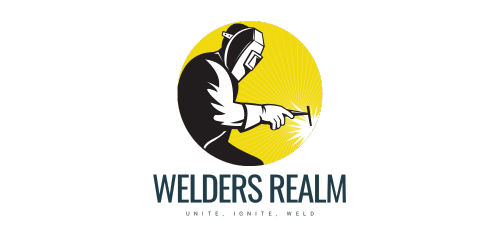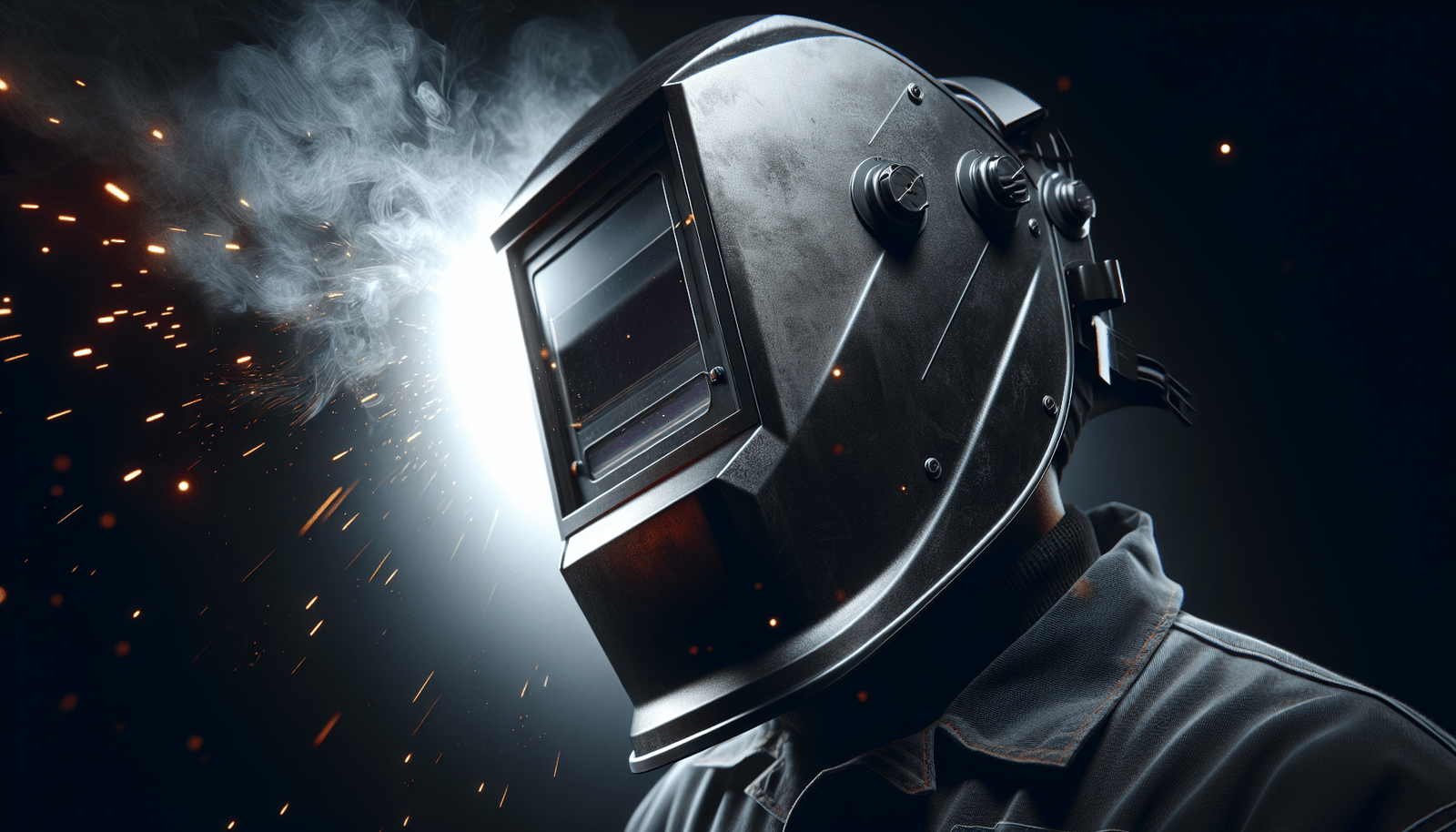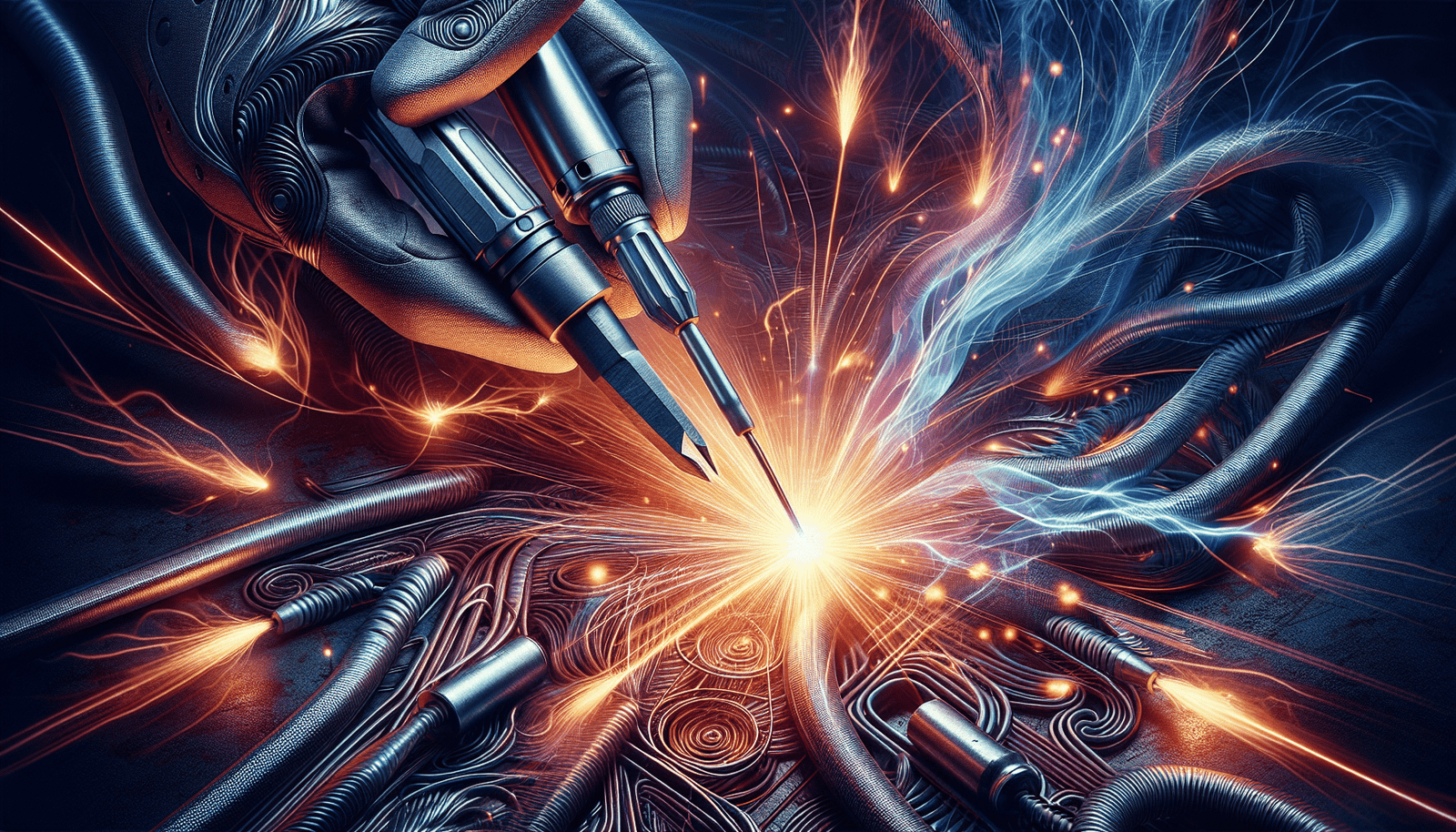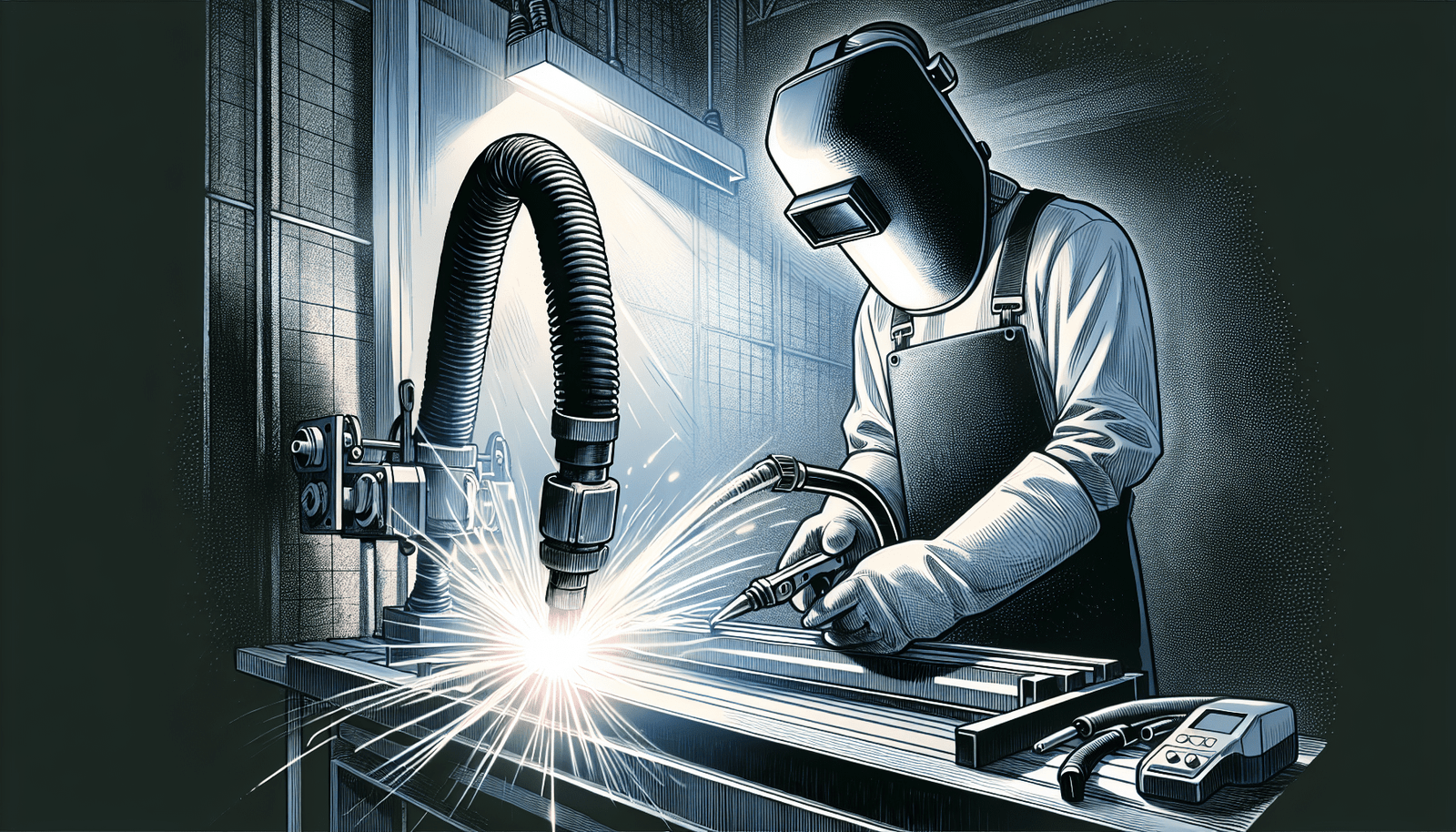Are you a welding enthusiast with a passion for creating extraordinary metal art pieces? Look no further! Our comprehensive guide to metal art fabrication will equip you with the knowledge and techniques needed to bring your artistic visions to life. Whether you’re a seasoned pro or just starting out, this article will answer all your burning questions and provide valuable insights into the world of welding. From choosing the right materials and tools to mastering intricate designs, we’ve got you covered. So, grab your welding helmet and let’s dive into the fascinating world of metal art fabrication!
Understanding Metal Art Fabrication
Metal art fabrication is the process of creating stunning art pieces using various metals. It involves shaping, welding, and manipulating metal to bring imagination to life. Metal art fabrication offers endless possibilities for creativity and allows artists to work with different metals to achieve their desired designs. Whether you’re a seasoned metal artist or a beginner looking to explore this artistic medium, understanding the fundamentals of metal art fabrication is essential.
Definition of Metal Art Fabrication
Metal art fabrication refers to the process of transforming raw metals into intricate art pieces through shaping, welding, and other techniques. It involves the use of specialized tools and equipment to cut, bend, and manipulate the metal into desired forms. Metal artists use their artistic skills and technical knowledge to create unique sculptures, wall art, furniture, and other decorative pieces.
The Significance of Metal Art Fabrication
Metal art fabrication holds significant importance in the art world. It allows artists to explore their creativity by working with a versatile medium like metal. Metal art pieces not only serve as aesthetically pleasing decor but also convey emotions, tell stories, and provoke thoughts. Metal art fabrication combines craftsmanship and artistic vision, resulting in visually stunning and durable pieces that can be passed down through generations.
Different Forms of Metal Art
Metal art can take various forms, each with its own unique characteristics and techniques. Some common forms of metal art include sculptures, wall art, functional furniture, jewelry, and architectural elements. The choice of form depends on the artist’s vision and the desired impact of the art piece. Metal art can range from abstract and contemporary designs to realistic and detailed representations.
Selecting the Right Metal for Art Fabrication
Choosing the right metal for your art fabrication project is crucial to ensure the desired outcome and longevity of the piece. Different metals offer varying properties and characteristics that determine their suitability for specific projects.
Commonly Used Metals for Art Fabrication
Some commonly used metals for art fabrication include:
- Steel: Steel is a popular choice due to its strength, durability, and versatility. It can be manipulated into various shapes and sizes, making it ideal for sculptures, furniture, and architectural elements.
- Aluminum: Aluminum is lightweight, corrosion-resistant, and easy to work with. It is often used for outdoor art installations, signage, and functional art pieces.
- Copper: Copper is known for its distinctive reddish-brown color and malleability. It is commonly used for decorative elements, jewelry, and architectural accents.
- Brass: Brass is an alloy of copper and zinc, characterized by its yellowish-gold hue. It is often chosen for decorative art pieces, jewelry, and musical instruments.
- Bronze: Bronze is a mixture of copper and other metals, such as tin or aluminum. It is highly valued for its durability, making it a preferred choice for sculptures and outdoor art.
Choosing the Appropriate Metal Based on Project Requirements
When selecting the metal for your art fabrication project, consider the following factors:
- Purpose: Determine whether your art piece will be displayed indoors or outdoors, as some metals may be more suitable for specific environments.
- Design Complexity: Some metals are easier to shape and manipulate than others, so choose a metal that aligns with the complexity of your design.
- Durability: Consider the longevity of your art piece and choose a metal that offers the necessary durability to withstand the intended conditions.
- Aesthetic Appeal: Each metal has its own unique visual characteristics, so select a metal that complements your artistic vision and desired aesthetic.
Safety Measures When Handling Different Metals
Safety should always be a priority when working with metal. Different metals may pose different health and safety risks. Here are some general safety measures to keep in mind:
- Use Personal Protective Equipment (PPE): When working with metal, wear gloves, safety glasses, and appropriate clothing to protect yourself from cuts, burns, and other injuries.
- Ensure Proper Ventilation: Some metals may emit toxic fumes when heated or welded, so ensure you are working in a well-ventilated area or use proper respiratory protection.
- Be Aware of Sharp Edges: Metal edges can be sharp and pose a risk of cuts. Use caution when handling metal pieces and consider deburring or filing sharp edges.
- Follow Material Handling Guidelines: Different metals may have specific handling requirements, such as avoiding direct skin contact or using caution when lifting heavy pieces. Familiarize yourself with the safety guidelines for the specific metal you’re working with.
Essential Tools for Metal Art Fabrication
To effectively create metal art, it is essential to have the right tools and equipment at your disposal. These tools help you cut, shape, and join metal pieces to bring your artistic vision to life.
List of Must-Have Tools for Metal Art Fabrication
- Angle Grinder: An angle grinder equipped with grinding discs is essential for cutting, grinding, and shaping metal pieces.
- Welding Machine: A welding machine, such as a MIG welder or TIG welder, allows you to join metal pieces together.
- Plasma Cutter: A plasma cutter is ideal for precise and clean metal cutting, providing accuracy and efficiency.
- Bench Vise: A bench vise securely holds metal pieces in place, allowing you to work on them safely and effectively.
- Chisels and Hammers: Chisels and hammers are used for shaping and forming metal, providing different textures and contours.
- Metal Nibbler: A metal nibbler is a versatile tool that cuts metal sheets without producing sparks or distortion.
- Files and Rasps: Files and rasps are used for smoothing rough edges and refining the overall finish of metal pieces.
- Safety Equipment: Personal protective equipment such as gloves, safety glasses, and a welding helmet are essential for safety during metal fabrication.
- Measuring Tools: Measuring tape, rulers, and calipers allow for precise measurements to ensure accurate metal fabrication.
Understanding the Use of Each Tool
It is important to understand the purpose and correct usage of each tool to ensure efficient and safe metal art fabrication.
- Angle Grinder: An angle grinder is used for cutting, grinding, and shaping metal. Different discs can be attached to the grinder to perform specific tasks. Cutting discs are used for cutting metal, while grinding discs are used for removing excess material and shaping.
- Welding Machine: A welding machine is used to join metal pieces together through the process of welding. MIG (Metal Inert Gas) welders are commonly used for general metal fabrication, while TIG (Tungsten Inert Gas) welders are used for intricate and precise welding.
- Plasma Cutter: A plasma cutter is a tool that uses a high-velocity jet of ionized gas to cut through metal. It provides clean, precise cuts and is especially useful for intricate designs.
- Bench Vise: A bench vise securely holds metal pieces in place during fabrication. It allows for stability and control when working on metal.
- Chisels and Hammers: Chisels and hammers are used for shaping and forming metal. They provide different textures and contours, allowing artists to create unique designs.
- Metal Nibbler: A metal nibbler is used for cutting metal sheets without producing sparks or distortion. It is ideal for intricate and detailed cuts.
- Files and Rasps: Files and rasps are used for smoothing rough edges and refining the overall finish of metal pieces. They help to achieve a polished and professional look.
- Safety Equipment: Personal protective equipment such as gloves, safety glasses, and a welding helmet are essential for protecting yourself from potential hazards during metal fabrication.
- Measuring Tools: Measuring tools ensure accuracy in metal fabrication by allowing precise measurements for cutting, bending, and shaping metal.
Proper Maintenance and Storage of Tools
To ensure the longevity and optimal performance of your metal fabrication tools, proper maintenance and storage practices are essential.
- Clean and Oil Regularly: After every use, clean your tools thoroughly to remove any metal particles or debris. Apply oil or lubricant to moving parts to prevent rust and ensure smooth operation.
- Store in a Dry Area: Moisture can cause tools to rust and deteriorate. Store your tools in a dry area, away from water or humidity.
- Protect from Impact: Avoid dropping or mishandling your tools, as this can lead to damage or misalignment. Store them in protective cases or hang them on pegboards to minimize the risk of accidents.
- Sharpen Blades and Discs: Keep your cutting tools sharp to ensure clean and accurate cuts. Regularly sharpen blades and discs, or replace them when they become dull.
- Regular Inspection: Periodically inspect your tools for any signs of wear, damage, or loose parts. Address any issues promptly to prevent further damage or accidents.
Techniques in Metal Art Fabrication
Metal art fabrication involves various techniques to shape, join, and manipulate metal to create stunning art pieces. Familiarizing yourself with these techniques will help you expand your creative possibilities and enhance your overall craftsmanship.
Different Techniques in Shaping Metals
Shaping metal is a fundamental aspect of metal art fabrication. Here are some popular techniques used to shape metals:
- Hammering: Hammering involves striking metal with a hammer to create texture, contour, or desired shapes. Different hammers and techniques can produce various effects, ranging from smooth to textured surfaces.
- Bending: Bending metal involves using tools like pliers, bending machines, or vices to create curves or angles in the metal. Common bending techniques include folding, crimping, and twisting.
- Forming: Forming refers to shaping metal by stretching, shrinking, or flowing it into the desired form using tools like hammers, stakes, or hydraulic presses. This technique allows the creation of intricate, organic shapes.
- Repoussé and Chasing: Repoussé involves hammering metal from the back to create raised designs, while chasing involves using punches and chisels to refine the details from the front. These techniques are commonly used to create relief patterns and intricate designs.
Learning Basic Welding Techniques
Welding is a crucial skill in metal art fabrication as it allows artists to join metal pieces together. Learning basic welding techniques will open up a world of possibilities for creating larger and more intricate metal art pieces. Here are some essential welding techniques to get started:
- MIG (Metal Inert Gas) Welding: MIG welding is one of the most common and user-friendly welding techniques. It involves using a continuous wire electrode and a shielding gas to join metals together. MIG welding is versatile and suitable for a wide range of applications.
- TIG (Tungsten Inert Gas) Welding: TIG welding is a more precise and intricate welding technique. It uses a tungsten electrode to produce an arc that fuses metals together. TIG welding is often preferred for detailed and complex designs, as it allows for greater control and produces high-quality welds.
- Spot Welding: Spot welding is used to join two metal surfaces by creating a series of overlapping spot welds. It is commonly used for sheet metal work and provides quick and efficient results.
Advanced Techniques for Detailed and Complex Designs
For artists looking to push the boundaries of metal art fabrication, there are advanced techniques that allow for more intricate and complex designs. These techniques require advanced skills and specialized tools. Some examples include:
- Metal Casting: Metal casting involves creating a mold and pouring molten metal into it to create complex shapes or duplicates of existing designs. This technique is commonly used for creating sculptures and decorative pieces.
- Airbrushing: Airbrushing involves using a specialized airbrush tool to spray fine layers of paint onto a metal surface, creating detailed and realistic designs. It requires precision and control, making it suitable for achieving intricate effects.
- Metal Etching: Metal etching is the process of chemically or mechanically removing layers of metal to create intricate designs or patterns. It involves using acids, lasers, or specialized tools to selectively remove metal from the surface.
Safety Precautions in Metal Art Fabrication
Safety should always be a top priority when engaging in metal art fabrication. Working with metals and tools can pose various risks if proper safety precautions are not followed. Here are some important safety measures to keep in mind:
Importance of Safety in Metal Art Fabrication
Safety is essential in metal art fabrication to protect yourself, others, and your environment. By following safety guidelines, you can minimize the risk of injury, accidents, and damage. Prioritizing safety ensures a comfortable and secure working environment, allowing you to focus on your artistic expression.
Using Personal Protective Equipment (PPE)
Personal protective equipment (PPE) is crucial for safeguarding against potential hazards while working with metal. Some essential PPE items include:
- Safety Glasses: Protect your eyes from sparks, flying debris, and harmful chemicals.
- Welding Helmet: Shield your face and eyes from intense brightness, arc flashes, and harmful UV rays while welding.
- Gloves: Wear appropriate gloves to protect your hands from cuts, burns, and harmful substances.
- Protective Clothing: Use flame-resistant clothing, such as a welding jacket or leather apron, to protect your body from sparks and heat.
- Respiratory Protection: Depending on the materials you work with, a respirator may be necessary to protect your lungs from fumes, gases, or fine particles.
Safe Environment Setup
Creating a safe environment for metal art fabrication is crucial for accident prevention. Here are some safety measures to consider:
- Adequate Ventilation: Ensure proper ventilation in your workspace to minimize the inhalation of fumes and gases. Use fans, air purifiers, or work in open areas when possible.
- Fire Safety: Keep a fire extinguisher nearby and be aware of potential fire hazards, such as flammable materials or sparks. Have a clear understanding of emergency procedures and exits.
- Organized Workspace: Keep your workspace clean and free from clutter to prevent trip hazards and ensure easy access to tools and equipment.
- Stable Work Surface: Use a stable, non-slip work surface to prevent accidental movement or slipping of metal pieces during fabrication.
- Proper Lighting: Ensure adequate lighting in your workspace to maintain visibility and reduce the risk of accidents.
Starting Your First Metal Art Fabrication Project
Embarking on your first metal art fabrication project is an exciting endeavor. By following a structured approach, you can ensure a successful outcome and an enjoyable creative process.
Developing a Simple Project Plan
Before diving into your project, it is important to develop a project plan. Consider the following elements when creating your plan:
- Artistic Vision: Define your artistic vision and what you aim to achieve through your metal art piece. Consider the style, size, and overall concept of your project.
- Materials and Tools: Determine the metals, tools, and equipment you will need to bring your vision to life. Ensure you have all the necessary materials and tools readily available.
- Budget and Timeline: Set a realistic budget and timeline for your project. This will help you stay organized and ensure you make progress within your desired timeframe.
- Research and Inspiration: Gather inspiration from other metal artists, art galleries, or online platforms to stimulate your creativity and understand different techniques and styles.
- Sketches and Measurements: Create sketches and measurements of your design to have a clear visualization of your metal art piece. This will serve as a guide throughout the fabrication process.
Execution of the Plan
Once you have developed a project plan, it’s time to put your plan into action. Here are the steps to follow during the execution phase:
- Set up your workspace: Ensure you have a clean and organized workspace with all the necessary tools and materials within reach.
- Prepare the metal: Cut, shape, and prepare the metal pieces according to your design and measurements. Use appropriate techniques and tools to achieve the desired shapes and forms.
- Join the metal pieces: Use welding techniques or other suitable methods to join the metal pieces together. Pay attention to detail and ensure strong and secure connections.
- Refine and finish: Smooth rough edges, refine the overall finish, and add any additional details or textures to enhance the aesthetics of your metal art piece.
- Protect and preserve: Apply appropriate finishes, such as paint or protective coatings, to protect the metal from corrosion and enhance its longevity.
- Evaluate and make adjustments: Step back and evaluate your metal art piece against your original vision. Make any necessary adjustments or refinements to ensure a satisfactory outcome.
Review and Make Necessary Adjustments
After completing your first metal art fabrication project, take the time to review your work and reflect on the experience. Consider the following points:
- Assessment: Evaluate the final outcome of your project against your initial artistic vision and project plan. Assess the technical execution, aesthetics, and overall satisfaction with the final result.
- Learning Opportunities: Identify any challenges or areas where you can improve your skills. Reflect on the techniques you used and consider exploring new techniques for future projects.
- Feedback: Seek feedback from others, such as fellow artists, mentors, or art communities. Their perspectives can provide valuable insights and constructive criticism to help you grow as a metal artist.
- Continuous Improvement: Use the experience gained from your first project to refine your skills and approach in future projects. Treat each project as an opportunity to learn and improve.
Advanced Metal Art Fabrication Projects
Once you have mastered the foundational skills of metal art fabrication, it’s time to challenge yourself with more complex projects. Advanced metal art fabrication projects push the boundaries of creativity and technical expertise.
Moving to More Complex Projects
Advanced metal art fabrication projects offer opportunities to experiment with new techniques and materials. Consider the following ideas:
- Large-Scale Sculptures: Create larger-than-life sculptures that make a bold statement. Explore different welding techniques and metal combinations to achieve visually stunning and structurally sound designs.
- Mixed Media Art: Combine metal with other materials, such as glass, wood, or stone, to create multidimensional and eye-catching art pieces. Experiment with various textures and finishes to create contrast and visual interest.
- Interactive Art Installations: Design art pieces that engage and interact with viewers. Incorporate moving parts, light elements, or sound to create immersive experiences.
- Architectural Features: Collaborate with architects or interior designers to create custom metal art for architectural projects. Fabricate intricate metal staircases, railings, or wall panels that add a unique touch to residential or commercial spaces.
Handling Challenges in Fabricating Detailed Art Pieces
Advanced metal art fabrication projects often involve intricate details and complex designs. Here are some tips for handling challenges:
- Preparing a Detailed Plan: Develop a detailed project plan that includes sketches, measurements, and a step-by-step breakdown of the fabrication process. This will help you stay organized and focused on the intricate details.
- Mock-Ups and Prototypes: Create mock-ups or prototypes of complex sections or details to test your design and fabrication techniques before working on the final piece. This allows you to make adjustments and refine your approach as needed.
- Patience and Perseverance: Intricate metal art fabrication requires patience and attention to detail. Take your time and proceed methodically to ensure accuracy and precision in every step of the process.
- Seek Expert Advice: If you encounter challenges or technical hurdles, don’t hesitate to seek advice from experienced metal artists or professionals. They may offer valuable insights or alternative approaches to overcome obstacles.
Case Studies of Advanced Metal Art Projects
Studying case studies of advanced metal art projects can provide inspiration and insight into successful execution. Research and explore renowned metal artists who have created intricate and awe-inspiring art pieces. Analyze their techniques, materials used, and the thought process behind their designs. This can help you develop a deeper understanding of advanced metal art fabrication and stimulate your own creativity.
Preserving and Maintaining Metal Art Pieces
Preserving and maintaining your metal art pieces is crucial to ensure their longevity and aesthetic appeal. The following practices will help you care for and protect your artwork.
Cleaning and Caring for Your Metal Art
Regular cleaning and care are essential for maintaining the appearance and integrity of your metal art pieces. Follow these practices:
- Dusting: Dust your metal art regularly using a soft, lint-free cloth or a feather duster. This will prevent dirt and grime from accumulating on the surface.
- Gentle Cleaning: Use mild, non-abrasive cleaners and solvents to remove any stubborn stains or marks. Avoid harsh chemicals that may damage the metal finish.
- Avoid Moisture: Protect your metal art from moisture and humidity, as it can lead to rust and corrosion. If displaying outdoor metal art, consider applying a protective coating to prevent damage.
- Waxing or Polishing: Depending on the metal and finish, you may choose to apply a wax or polish to maintain the shine and luster of your metal art. Follow product instructions and choose appropriate products for the specific metal.
- Handle with Care: When moving or handling metal art pieces, take care to avoid scratching or denting the surface. Use gloves or soft materials to protect the metal during transportation and installation.
Preventing Rust and Corrosion
Rust and corrosion can significantly damage metal art pieces over time. Here are some preventive measures:
- Protective Coatings: Apply appropriate protective coatings, such as clear lacquers or sealants, to the metal surface. These coatings form a barrier against moisture and inhibit rust formation.
- Regular Inspections: Periodically inspect your metal art for any signs of rust or corrosion. Address any issues promptly to prevent further deterioration. Apply touch-ups or refinishing treatments as necessary.
- Avoid Exposure to Moisture: Avoid placing metal art pieces in areas prone to moisture, such as bathrooms or outdoor spaces with direct exposure to rain. If displaying outdoor art, ensure proper drainage and consider periodic maintenance to protect against the elements.
Appropriate Use and Display of Metal Art
Proper use and display of metal art can impact its longevity and overall appearance. Consider the following guidelines:
- Indoor vs. Outdoor Display: Choose suitable locations for displaying your metal art based on its intended purpose. Ensure sufficient protection and maintenance if displaying outdoor art.
- Lighting Considerations: Be mindful of lighting conditions when displaying metal art. Direct sunlight or harsh artificial lighting can fade finishes, alter colors, or cause heat-related damage.
- Mounting and Installation: Use appropriate mounting or installation methods to securely display your metal art. Consider the weight and dimensions of the piece and ensure it is safely attached to the desired surface.
- Avoid Extreme Temperatures: Extreme temperatures can cause expansion or contraction of metal, leading to structural issues or damage. Avoid displaying metal art in areas prone to extreme temperature fluctuations.
Market Opportunities for Metal Art
Metal art presents numerous market opportunities for artists to showcase and sell their work. Here are some avenues to consider:
Selling Your Work Online
Online platforms provide an excellent opportunity to showcase and sell your metal art to a global audience. Consider the following options:
- E-commerce Websites: Set up your own e-commerce website to promote and sell your metal art directly to customers. Customize the website to reflect your artistic style and provide comprehensive product information.
- Online Marketplaces: List your metal art on popular online marketplaces, such as Etsy or eBay. These platforms attract a large customer base and provide exposure to potential buyers worldwide.
- Social Media Platforms: Utilize social media platforms, such as Instagram or Facebook, to showcase your metal art and reach a broader audience. Consistently post high-quality images and engaging content to attract followers and potential buyers.
Joining Art Exhibits and Fairs
Participating in art exhibits and fairs allows you to connect with art enthusiasts, collectors, and potential buyers. Consider the following options:
- Local Art Shows: Research and participate in local art shows and exhibitions. These events provide an opportunity to showcase your metal art to a targeted audience and generate local interest.
- Art Fairs: Join larger art fairs or festivals that attract a diverse range of artists and attendees. These events often draw art collectors and buyers from various locations, offering significant exposure and sales potential.
- Gallery Representation: Approach art galleries that specialize in metal art or contemporary art. Gallery representation can give your work credibility and access to a curated audience.
Building a Portfolio for Potential Clients
Creating a professional portfolio is essential for attracting potential clients and showcasing your metal art. Consider the following tips:
- High-Quality Images: Capture high-resolution images of your metal art to showcase the details, textures, and overall aesthetics. Consider hiring a professional photographer or learn basic photography techniques to present your work in the best light.
- Variety and Depth: Include a diverse range of metal art pieces in your portfolio to demonstrate your versatility and artistic vision. Showcase different styles, techniques, and scales to appeal to a broader audience.
- Detailed Descriptions: Provide detailed descriptions for each art piece, including the inspiration behind the work, materials used, and any notable features or techniques employed. This information adds depth to your portfolio and engages potential clients.
- Testimonials and Reviews: Include testimonials or reviews from satisfied clients or collectors to build trust and credibility. Highlight any exhibitions, awards, or recognition you have received to further validate your professional achievements.
Improving Your Metal Art Fabrication Skills
Continuous learning and improvement are essential for growing as a metal artist. Explore the following avenues to enhance your metal art fabrication skills:
Attending Workshops and Courses
Participating in workshops and courses allows you to learn from experienced metal artists and gain new insights and techniques. Look out for:
- Local Workshops: Attend local workshops conducted by established metal artists or art schools. These workshops offer hands-on learning experiences and the opportunity to interact with fellow artists.
- Online Courses: Explore online platforms that offer metal art fabrication courses. These courses provide flexibility and access to a wide range of instructors and techniques from the comfort of your own workspace.
Learning from Other Metal Artists
Engage with other metal artists to share experiences, knowledge, and insights. Consider the following approaches:
- Join Art Communities: Become a member of art communities or forums where metal artists gather to share ideas and provide feedback on each other’s work. Participate actively, ask questions, and contribute to the community.
- Artist Mentorship: Seek out mentorship opportunities with established metal artists who can provide guidance, critique your work, and offer valuable insights based on their experience.
Staying Updated With Trends and Styles in Metal Art
Stay informed about the latest trends and styles in metal art to keep your work fresh and relevant. Consider the following strategies:
- Art Publications and Magazines: Read art publications and magazines that cover metal art and contemporary art trends. Stay informed about emerging artists, gallery exhibitions, and new techniques.
- Online Research: Explore online platforms, social media accounts, and websites dedicated to metal art. Follow influential metal artists and art curators to stay updated on current trends and popular styles.
By continually seeking new learning opportunities and staying connected to the metal art community, you can enhance your metal art fabrication skills and broaden your artistic horizons.
In conclusion, metal art fabrication is a captivating and versatile form of artistic expression. Understanding the fundamentals and techniques of metal art fabrication allows you to explore your creativity and create stunning art pieces. Remember to prioritize safety, choose the appropriate metals and tools for your projects, and continuously improve your skills through learning and practice. With the right knowledge and passion, your metal art will capture the imagination of viewers and add a touch of brilliance to the art world.





